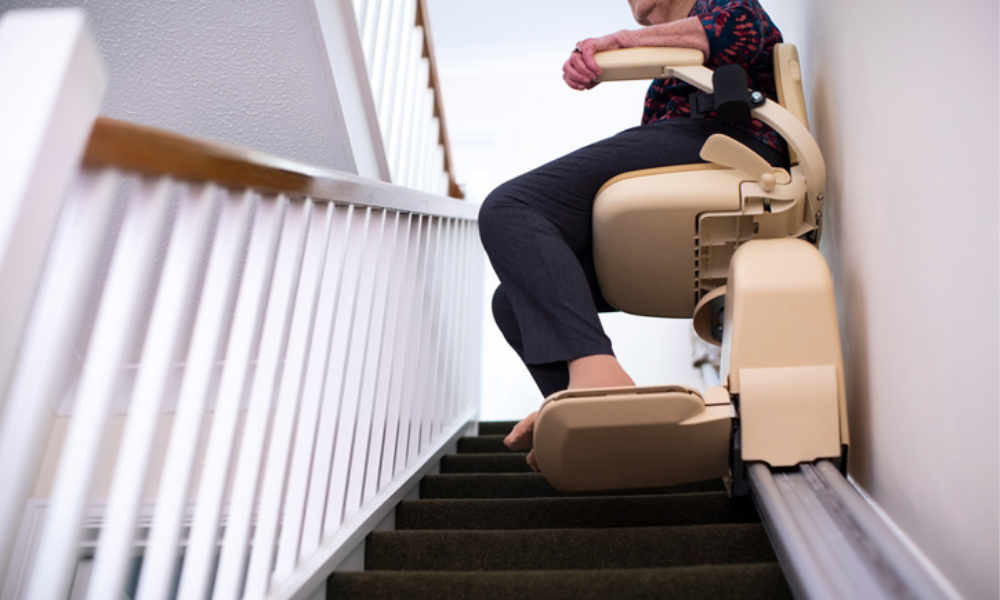Discover the Safety Benefits of Standing Stair Lifts for Home Mobility
Standing stair lifts are becoming a thoughtful solution for individuals who face difficulties with seated options or knee bending. Designed for upright use with handrail support, they prioritize stability and ease of use on multi-level home staircases. This guide explains how standing models enhance independence and safety, how they compare to other stair lift types, and which key design features affect functionality and cost. Explore more about what people often consider when choosing a lift that fits both their mobility needs and their home layout.

What are standing stair lifts and how do they work?
Standing stair lifts are innovative mobility aids designed to transport individuals up and down stairs while maintaining an upright position. Unlike traditional seated stair lifts, these devices feature a platform with support rails that allow users to stand securely as they ascend or descend. The lift operates on a track system installed along the staircase, powered by a motor that smoothly moves the platform between floors.
How do standing stair lifts enhance safety for users?
Standing stair lifts prioritize user safety through several key features. The platform is equipped with non-slip surfaces and sturdy handrails, providing stability and support throughout the journey. Safety sensors detect obstacles and automatically stop the lift if necessary. Many models also include seat belts or harnesses for additional security. These safety measures make standing stair lifts an excellent choice for those who have difficulty sitting or prefer to remain upright.
Who can benefit most from using a standing stair lift?
Standing stair lifts are particularly beneficial for individuals who:
-
Have difficulty bending their knees or sitting for extended periods
-
Experience pain or discomfort when transitioning from a seated to standing position
-
Prefer to maintain an upright posture for balance or comfort reasons
-
Need to transport items up and down stairs while using the lift
-
Have limited flexibility in their hips or lower back
These mobility aids for seniors and individuals with disabilities can significantly improve quality of life by restoring access to all levels of the home.
How do standing stair lifts compare to other home elevator alternatives?
When considering safe stair solutions, it’s essential to compare standing stair lifts with other options:
-
Traditional seated stair lifts: Less expensive but may not suit those with knee or hip problems.
-
Wheelchair platform lifts: Ideal for wheelchair users but require more space.
-
Home elevators: Offer the most comprehensive solution but are significantly more expensive and require major home modifications.
-
Staircase modifications: Options like widening steps or adding handrails are less costly but may not fully address mobility needs.
Standing stair lifts often strike a balance between functionality, space efficiency, and cost-effectiveness for many users.
What key features should you look for in a standing stair lift?
When exploring standing stair lift options, consider the following features:
-
Weight capacity: Ensure the lift can support the user’s weight comfortably.
-
Platform size: Look for a spacious platform that accommodates the user and any assistive devices.
-
Control options: Choose between joystick, push-button, or remote control operations based on user dexterity.
-
Battery backup: Essential for continued operation during power outages.
-
Folding design: Opt for models that can fold when not in use to minimize stairway obstruction.
-
Customizable track: Select a lift that can be tailored to your specific staircase configuration.
-
Safety features: Prioritize models with comprehensive safety sensors and emergency stop functions.
What are the typical stair lift costs and available options?
When considering stair lift costs, it’s important to understand that prices can vary significantly based on factors such as staircase complexity, lift features, and installation requirements. Here’s a comparison of some popular standing stair lift options:
| Product | Provider | Cost Estimation |
|---|---|---|
| StandUp Lift | Acorn Stairlifts | $3,500 - $5,000 |
| Verto Standing Lift | ThyssenKrupp Access | $4,000 - $6,500 |
| Standing Stairlift | Bruno Independent Living Aids | $4,500 - $7,000 |
| Perch Lift | Stannah Stairlifts | $3,800 - $5,500 |
| Standing Lift Pro | Handicare | $4,200 - $6,800 |
Prices, rates, or cost estimates mentioned in this article are based on the latest available information but may change over time. Independent research is advised before making financial decisions.
It’s worth noting that many providers offer both purchase and rental options, which can affect overall costs. Additionally, some companies provide refurbished models at lower price points. Installation fees, which typically range from $500 to $1,500, should also be factored into the total cost.
In conclusion, standing stair lifts offer a valuable solution for individuals seeking safe and independent mobility within multi-level homes. By providing a stable, upright transportation option, these lifts address the needs of those who struggle with traditional seated models. When considering a standing stair lift, carefully evaluate your specific requirements, home layout, and budget to choose the most suitable option for enhanced safety and independence.




